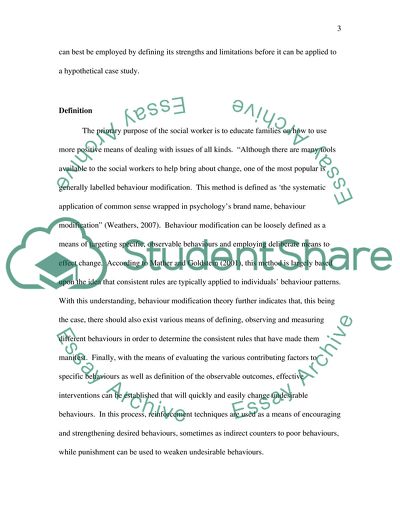Cite this document
(Behaviour Modification Therapy Case Study Example | Topics and Well Written Essays - 3000 words, n.d.)
Behaviour Modification Therapy Case Study Example | Topics and Well Written Essays - 3000 words. https://studentshare.org/psychology/1707072-what-is-your-understanding-of-behaviour-modification-give-an-example-of-how-you-might-use-this-approach-when-working-with-children-and-families
Behaviour Modification Therapy Case Study Example | Topics and Well Written Essays - 3000 words. https://studentshare.org/psychology/1707072-what-is-your-understanding-of-behaviour-modification-give-an-example-of-how-you-might-use-this-approach-when-working-with-children-and-families
(Behaviour Modification Therapy Case Study Example | Topics and Well Written Essays - 3000 Words)
Behaviour Modification Therapy Case Study Example | Topics and Well Written Essays - 3000 Words. https://studentshare.org/psychology/1707072-what-is-your-understanding-of-behaviour-modification-give-an-example-of-how-you-might-use-this-approach-when-working-with-children-and-families.
Behaviour Modification Therapy Case Study Example | Topics and Well Written Essays - 3000 Words. https://studentshare.org/psychology/1707072-what-is-your-understanding-of-behaviour-modification-give-an-example-of-how-you-might-use-this-approach-when-working-with-children-and-families.
“Behaviour Modification Therapy Case Study Example | Topics and Well Written Essays - 3000 Words”. https://studentshare.org/psychology/1707072-what-is-your-understanding-of-behaviour-modification-give-an-example-of-how-you-might-use-this-approach-when-working-with-children-and-families.


